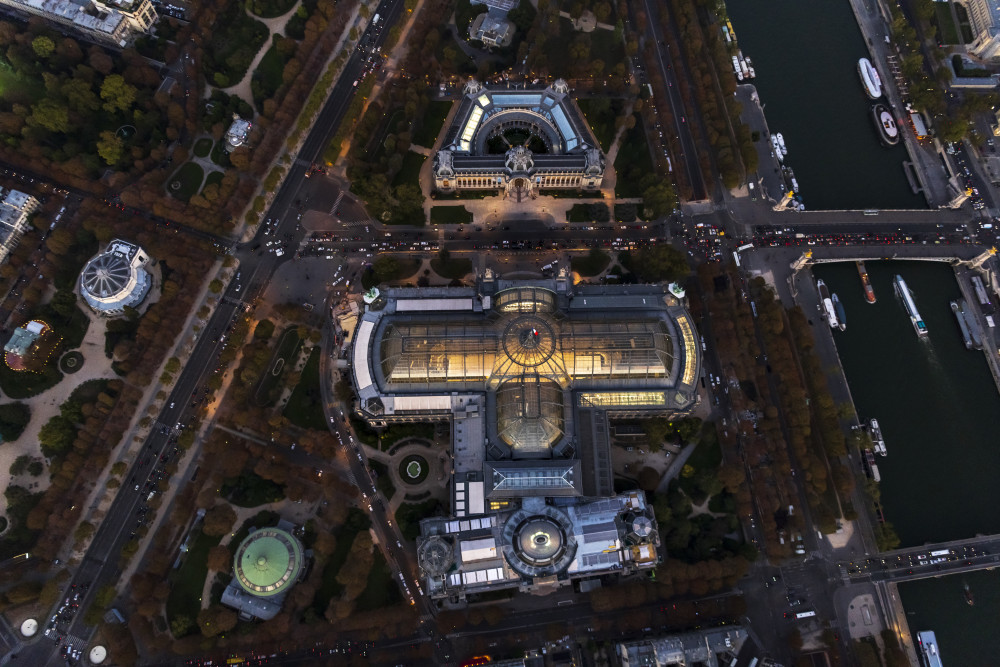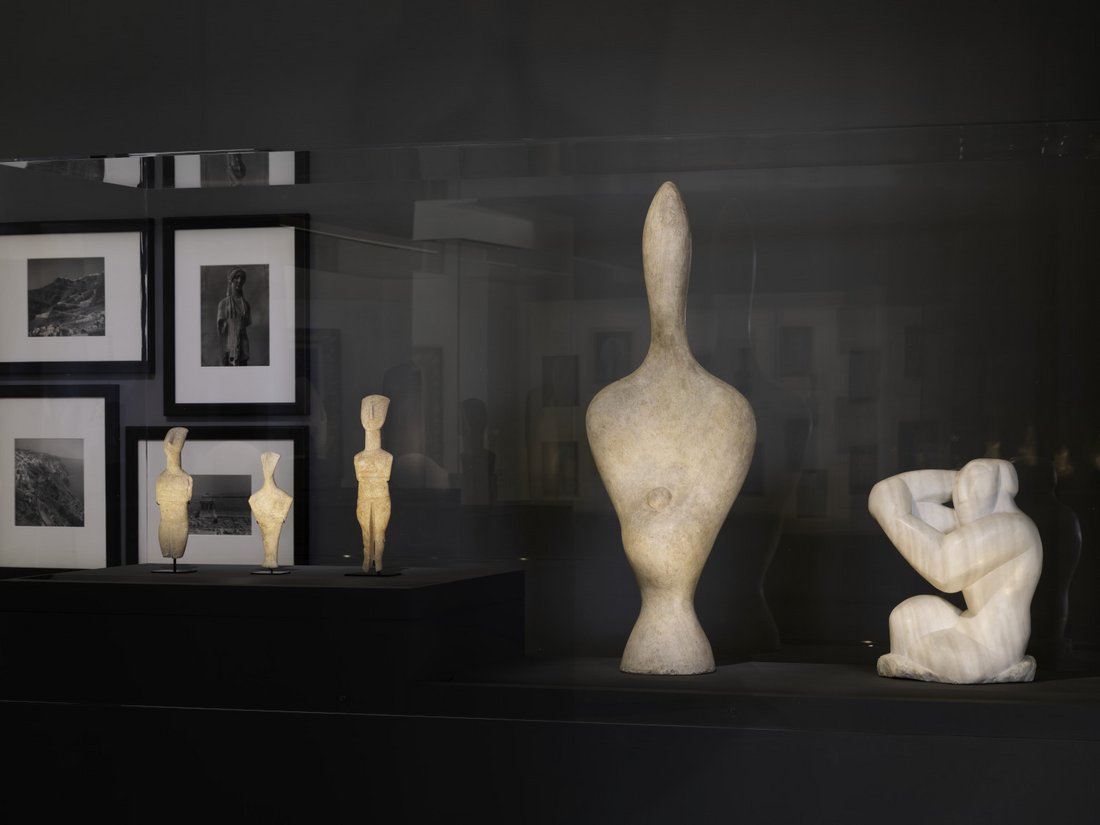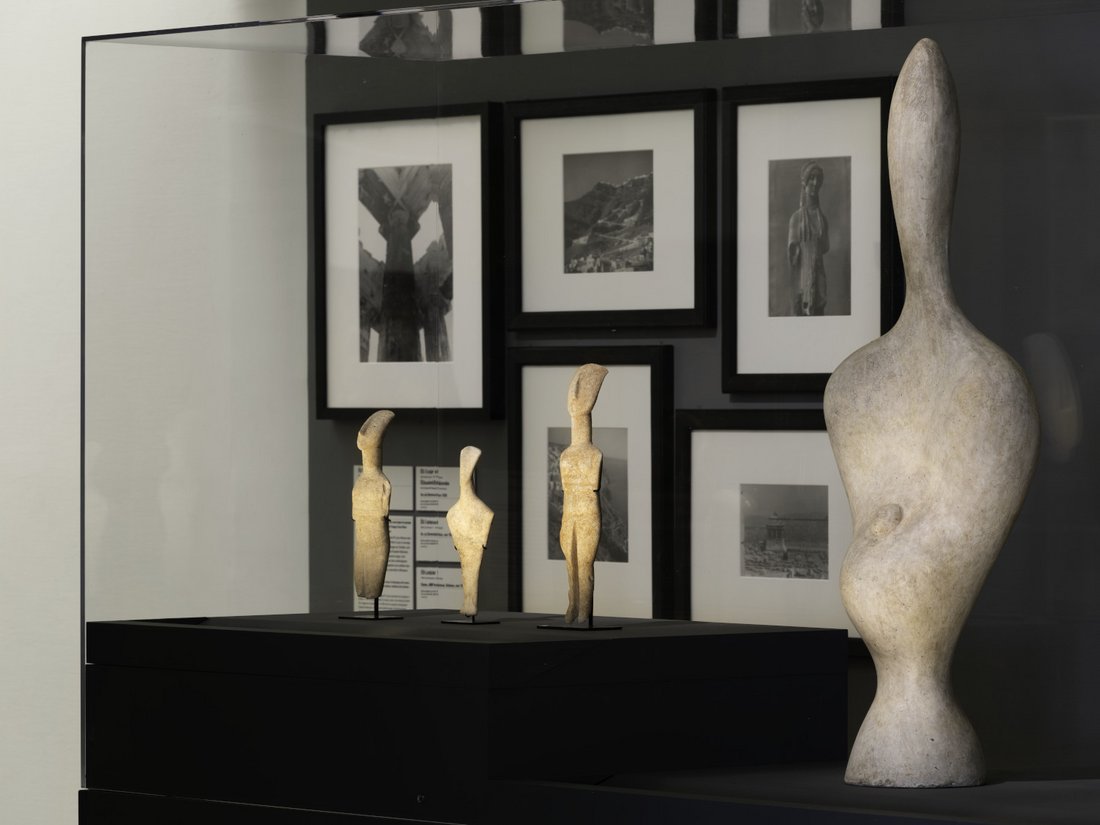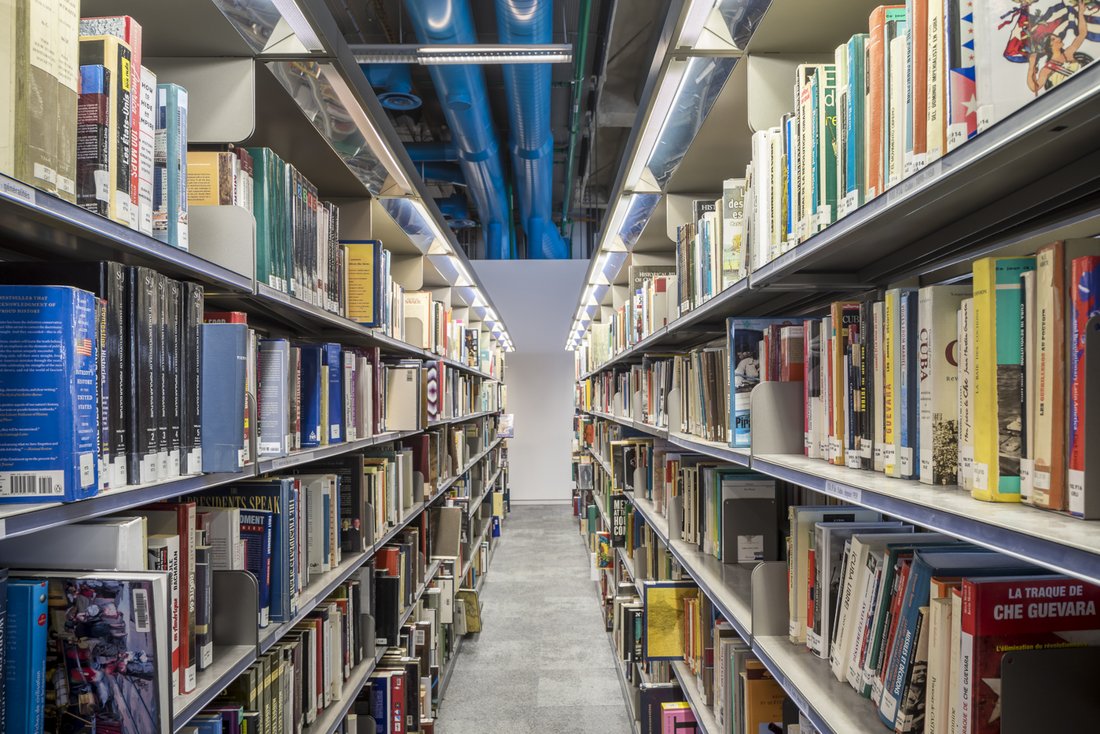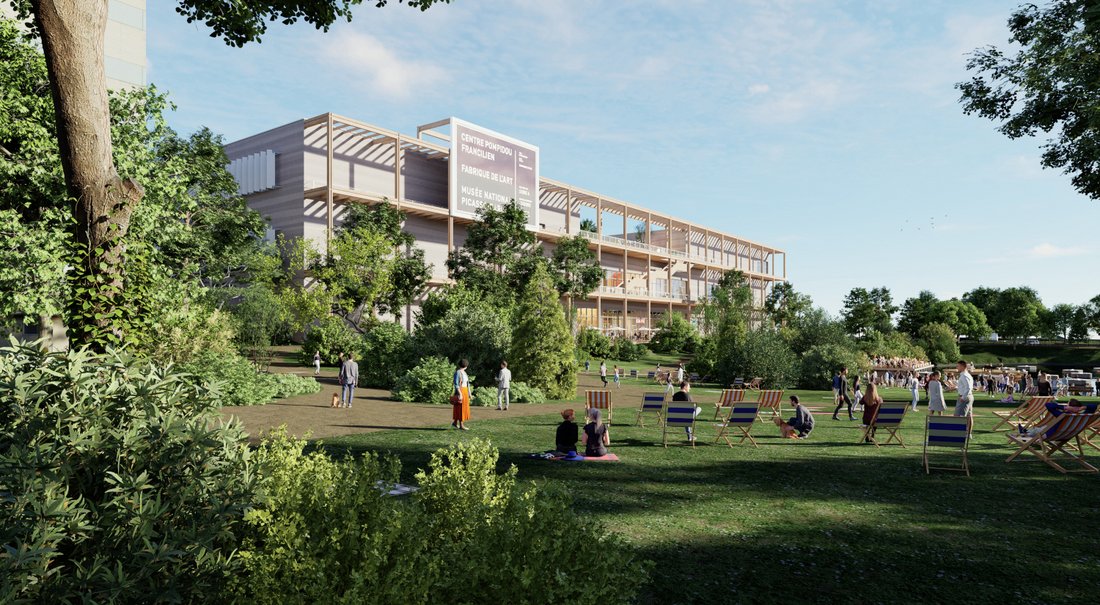Paris / Grand Paris
70% of visitors to the Centre Pompidou, the Institute for Research and Coordination in Acoustics/Music (Ircam) and the Public Information Library (Bpi) come from the Île-de-France region in and around Paris. It is therefore essential to remain active in Paris, particularly on the Beaubourg Plateau, and in Île-de-France. Ircam will remain open and continue to welcome the public to its premises. The Bpi will be temporarily relocated to the Lumière building in Paris's 12th arrondissement. As for the Centre Pompidou, it will be extending its artistic, cultural and educational programming to a number of partner institutions, through often longstanding relationships.
The partnership between the Centre Pompidou and Grand Palais RMN is part of a long history shared by the two establishments, dating back to 1964, when the Galeries Nationales were opened. As the renovation works at the Centre coincide with the reopening of the Grand Palais, an unprecedented partnership has been created under the aegis of the Ministry for Culture, which will mean that major, popular exhibitions of modern and contemporary art can continue to be held in Paris.
In a spirit of co-production on an equal footing with GrandPalaisRMN, the Centre Pompidou will handle the programming of two exhibition tours, in the Champs-Elysées galleries (2,000 m2) and Seine galleries (800 m2). Over the next five years, the general public will thus enjoy four exhibitions a year in this fully restored venue in central Paris.
The multidisciplinary events (cinema, live performances, meetups, etc.) typically offered by Centre Pompidou will be held at certain times of the year in other areas of the Grand Palais (auditoriums, galleries or the Nave), in line with the rest of the venue's programming.
The first exhibitions
Niki de Saint Phalle, Jean Tinguely, Pontus Hultén
Galeries Champs-Élysées
6 June 2025 – 4 January 2026
This exhibition pays tribute to two major artists, Niki de Saint Phalle (1930-2002) and Jean Tinguely (1925-1991), exploring the most striking moments in the career of this astounding couple, united, not only in love, but by indefectible artistic ties sparking reciprocal enrichment. It was the driving force of Pontus Hultén (1924-2006), first director of the Musée national d’art
moderne at the Centre Pompidou, which propelled the two artists to prominence. The exhibition looks back on Niki de Saint Phalle’s and Jean Tinguely’s creations via the prism of his personality, as he leveraged his role at the museum to acquire works, put on retrospectives focussing on each artist, giving them carte blanche and backing outsized exhibitions and installations.
An edutaining circuit through Jean Tinguely’s animated machines and Niki de Saint Phalle’s sculptures and colourful reliefs, as well as previously unseen films fom the archives and abundant documents on the two artists’ ambitious, even titanic projects.
Curator: Sophie Duplaix, curator in chief of Service des collections contemporaines, Centre Pompidou – Musée national d'art moderne
Art brut
Galeries Seine
6 June – 21 September 2025
In 2022, the Centre Pompidou – Musée national d’art moderne acquired an amazing 921 works by 242 artists from Bruno Decharme’s collection of outsider art. These works resonate with the very rich set of works by Dubuffet already in the collection, the works donated by Daniel Cordier, accounting for most of the Museum’s outsider art, André Breton’s studio and the Kopac donation, which contributed to the outsider art adventure.
The exhibition at the Grand Palais will be introducing an immersion in the creative force of artists having produced their work on the fringes of the art world, based especially on masterpieces from the collection.
Henri Matisse 1941-1954. Colour without limit*
Galeries Champs-Élysées
10 March 2026 – 19 July 2026
This exhibition will put the spotlight on Henri Matisse’s last period of creation, an ultimate masterful artistic phase during which he experimented with a new technique: gouache cutouts.
Recovering in 1941 from a serious operation which nearly cost him his life, Henri Matisse felt the urge to enter "a second life". Knowing his days were numbered, the artist sidestepped the restrictions of his great age and sickness in newfound energy. He reinvented himself by way of this necessary, new plastic language, attaining universality through simplicity. Colour attained its full powers of spatial expression and painting itself underwent profound renewal.
A total of over 170 works from the huge Centre Pompidou collection but also from private collections and international institutions, will be brought together for the occasion.
Curator: Claudine Grammont, curator in chief of Cabinet d’art graphique, Centre Pompidou – Musée national d’art moderne
*Working title
Co-productions: GrandPalaisRmn and Centre Pompidou
Just like « Idoles. Dialogue de l'antique et du moderne » ("Idols: when ancient and modern art interact”), currently presented in the collection of the Musée National d'Art Moderne and combining Cycladic and Anatolian statuettes and sculptures by modern artists, the Musée du Louvre and Centre Pompidou are embarking on a partnership that will help rethink the presentation of national collections held by various national museums, going beyond how they are divided up between conservation sites to create an unprecedented "imaginary museum".
Focused around a given theme, the public will discover works of art from the Louvre in dialogue with modern and contemporary art, opening the door to affinity, surprise, resonance or paradox - and vice versa -, encouraging them to rethink key moments in the history of art and consider its continuity and rupture in a different way.
The first exhibition
Objets, or The History of Objects
Rooms in the Objets d’art department
October 2026 – July 2027
This inaugural dialogue between the collections of these two major institutions will focus on the notion of objects in modern and contemporary creation, echoing the notion of objet d’art, an expression used since the 19th century to designate the collections of decorative arts at the Louvre, from the Middle Ages through to the French Second Empire.
Throughout the 20th century and through to the present day, this perception of decorative arts has enjoyed renewed popularity. From Pablo Picasso’s passion for the volutes on a pair of rocaille-style andirons belonging to François-Thomas Germain, to Sheila Hicks’ love of huge medieval and Renaissance tapestries; from the established affinities of Italian and modern designers with their predecessors; from Duchamp's readymade to Philippe Mayaux's objects in the window…
Crossing borders and eras, questioning the notion of decoration as much as the reign of objects, these encounters between decorative arts and modern and contemporary works, the exhibition invites visitors to take pleasure in discovery, mapping out another form of "museum imaginary" for them.
Curators: Olivier Gabet, director of Objets d’art department, musée du Louvre / Marie-Ange Brayer, curator in chief, Service design et prospective industrielle ; Sophie Duplaix, curator in chief, Collections contemporaines ; Alicia Knock, curator in chief, Service création contemporaine et prospective, Centre Pompidou – Musée national d’art moderne
Co-organisation: Musée du Louvre and Centre Pompidou
Motivated by the desire to transcend the division of national collections between museums, the Centre Pompidou aims to forge closer links with other institutions.
The relationship between primitive art and modern and contemporary art will be celebrated through a partnership with the Musée du Quai Branly - Jacques Chirac, while the relationship between music and art will be explored through an exhibition entitled "Kandinsky and Music" (working title), to be presented at the Philharmonie de Paris from October 2025 to January 2026.
At the Monnaie de Paris, the "Georges Mathieu" exhibition from April to September 2025 will be curated by three partners, including the Institut National d'Histoire de l'Art.
Parallel to this, projects are being planned with other institutions including the Cité de l’Architecture et du Patrimoine, the Musée d’Orsay et de L’Orangerie, the Musée Rodin, the Musée National des Arts Asiatiques-Guimet and the Jeu de Paume. There will be countless opportunities to step outside our historical perimeter, to blur the boundaries between disciplines and thus to re-interpret the history of art.
The Public Information Library (Bpi), the Centre Pompidou archives and the Kandinsky Library (Bk), the documentation and research centre of the Musée National d'Art Moderne, will be moving to a temporary site while the Centre is closed: the Lumière building, located at 40 Avenue des Terroirs de France in the12th arrondissement of Paris.
The Bpi
This relocation will enable the Bpi to remain true to its mission: an up-to-date library, with free access to encyclopaedic collections in physical and digital form, but without a loan system; free and open to all, with the same opening hours. A total of 9,600 m2 allocated over two floors will accommodate 80% of its collections (310,000 printed documents, 1,600 press titles and periodicals, 150 databases) and 75% of its seating capacity.
Three workshop areas will be dedicated to continuing to offer mediation activities in the areas of media and information literacy, language learning, digital literacy, job-seeking and cultural activities (writing, music, video games, comic strips, etc.)
The Bpi’s cultural programming will continue at various venues:
- in the Lumière building, most of the series of meetups, debates and workshops focusing on the humanities and contemporary issues will be held, as well as Comic Strip Thursdays and Press Start festival dedicated to video games;
- in partner venues, there will be screenings and meetups from the Documentary Film Library, the annual Cinéma du réel and Effractions festivals, and exhibitions on comics and literature.
The Centre Pompidou building and its influence in the Beaubourg district will remain active throughout the closure.
A "worksite visitor centre" will remain open, the format of which will soon be devised in conjunction with the contractors selected for the renovation project and local residents.
As was the case when the Centre was built in the 1970s, artists will also be commissioned to produce specific artworks seizing on this very special moment in Paris' urban and social history.
Ircam
Ircam will remain open, with the same activities, throughout the building works at the Centre Pompidou, from 2025 to 2030.
Founded by Pierre Boulez and currently run by Frank Madlener, this Centre Pompidou organisation is a unique place where musical creation, artistic prospects and scientific and technological innovation all converge around three main activities: creation, research and transmission. Artists will still be hosted for production residencies at the nine studios. The public will continue to enjoy its spaces – in particular the Espro concert hall, which was restored and reopened in June 2022 – with musical, experimental and professional events throughout the season. There will also be ManiFeste, Ircam's annual multi-disciplinary festival and academy, which combines music with other disciplines (theatre, dance, digital arts, visual arts). The event will be an opportunity to strengthen existing links between the programmes at all components of the Centre Pompidou.
The Centre Pompidou’s Studio 13/16 sets up shop at La Gaîté Lyrique – Factory from the Past.
Invented in 2010 at the Centre Pompidou as an area catering to teens, and developing an original ofer involving workshops and up-to-the-minute collective artistic experiences, Studio 13/16 will be moving in early 2025 through to 2027 to an arts venue run by the City Council of Paris, La Gaîté Lyrique.
Sharing values such as hospitality, transmission and cooperation, with multi-disciplinary artists in residence at La Gaîté Lyrique, the Studio 13/16 is forging ahead with its creative, participatory adventure in the new context of La Gaîté Lyrique’s "Factory from the Past". This will be an opportunity to consolidate its commitment to young people, working on topics that appeal to them and testing new setups for meetups and artistic mediation, catering to teens and young adults, on a 400-sq.m plateau, with guest artists.
In summer 2026, the Centre Pompidou is due to open a new venue for a new generation: the Centre Pompidou Francilien – Fabrique de l’Art / Musée National Picasso-Paris. This new site covers 30,000 m2 and is scheduled to open in summer 2026. It represents an unprecedented blend of heritage challenges involved in conservation and management of works and objectives around openness and cultural programming at the regional level and beyond. It has been imagined as an "art factory", adapted to the multi-centred reality of the Île-de-France region.
It is intended to accommodate some 140,000 works from the Centre Pompidou – Musée National d'Art Moderne and 10,000 works from the Musée National Picasso-Paris. The venue has been designed as a centre of excellence for the conservation, restoration and display of works from the collections of the Musée National d'Art Moderne and Musée National Picasso-Paris. These storage spaces will be partially open to the public, so that visitors can enjoy a new way to experience artworks and discover museum professions.
The flexible premises will allow for the organisation of conferences and performances in the midst of exhibition circuits. A project called "Storehouse School" will transmit the expertise of museum professionals and knowledge around the collection. It will be offered through a range of programs: collaborations with the public during technical and artistic workshops (schools, leisure centres, families, etc.), research residencies for professionals, a resource centre open to all, design material made available, and so on. Lastly, the Centre Pompidou Francilien will be showcasing the Musée National d’Art Moderne’s new acquisitions and fostering dialogue between contemporary artistic creations.
